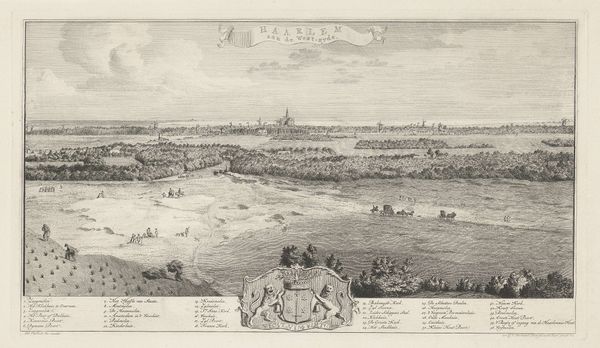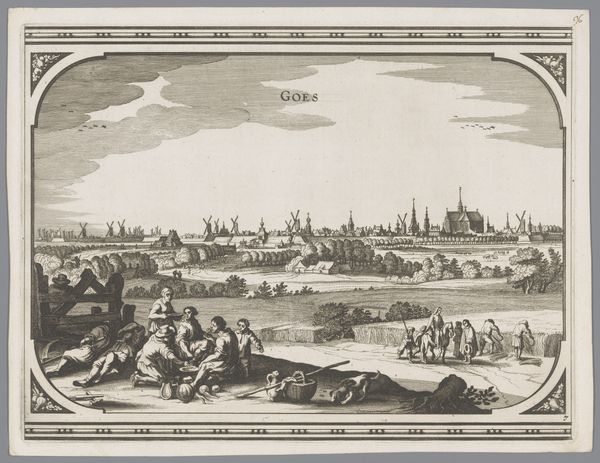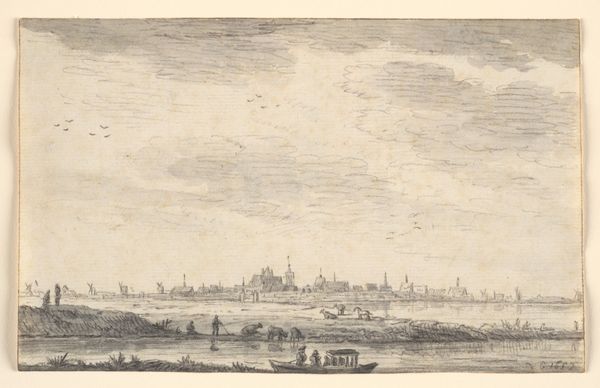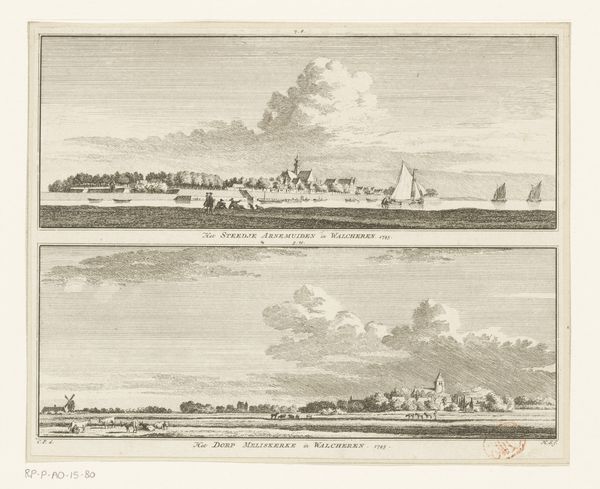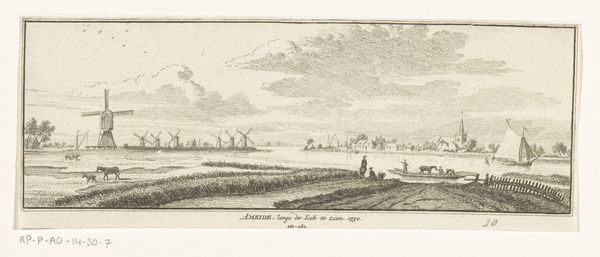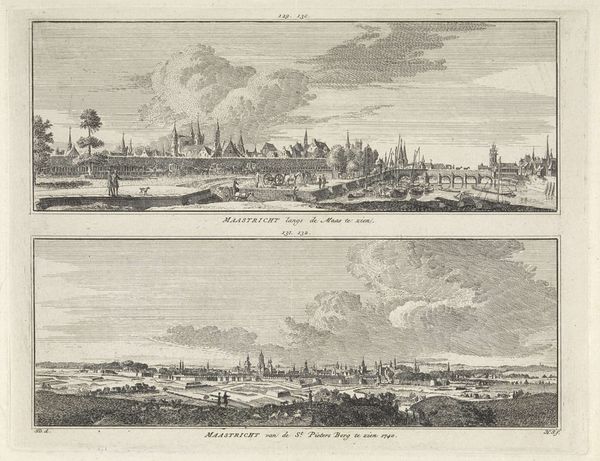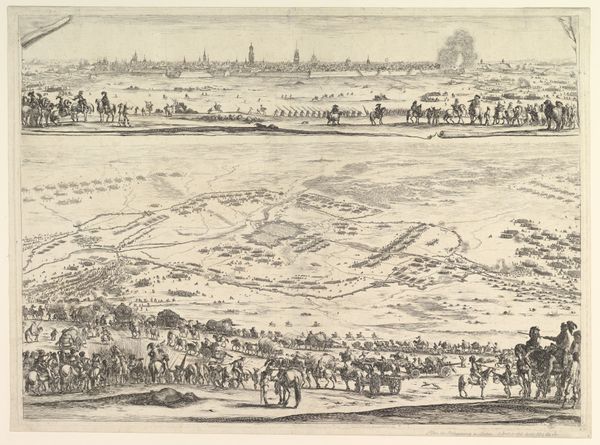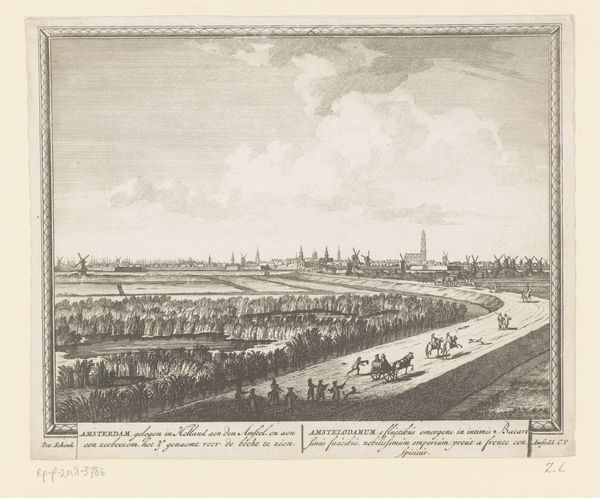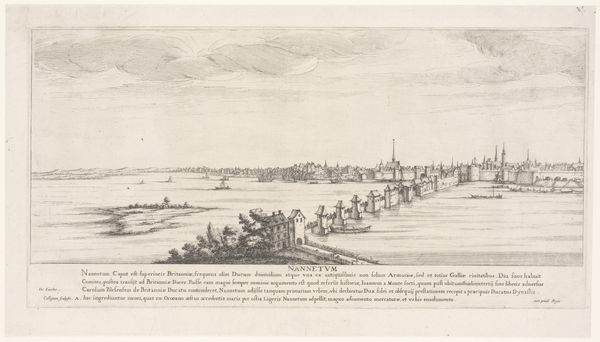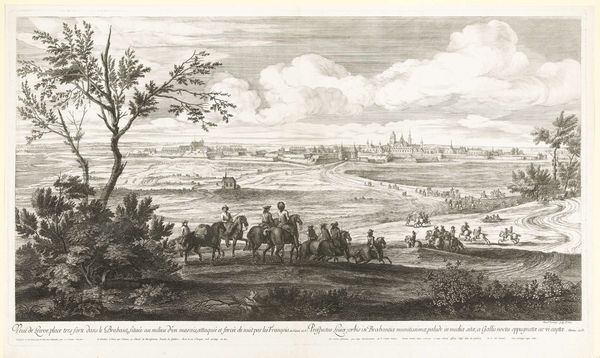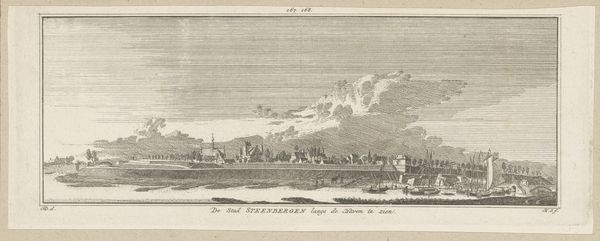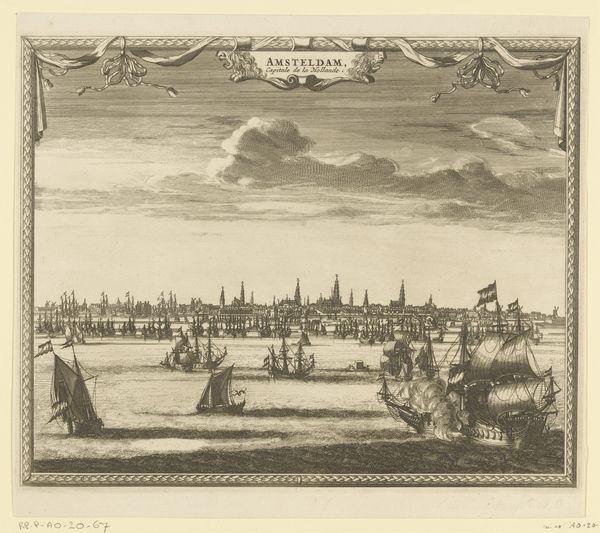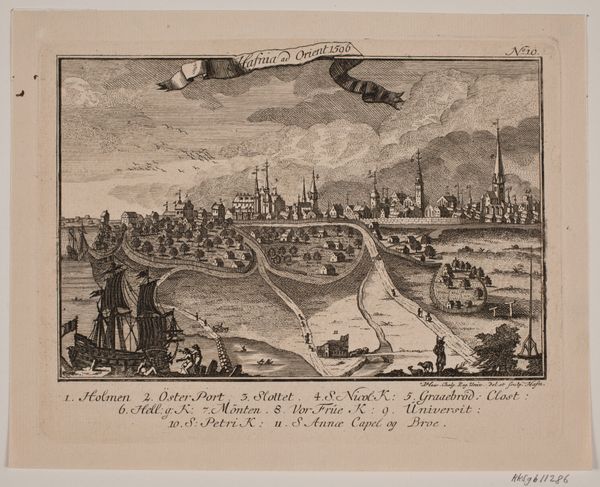
print, etching
#
baroque
#
dutch-golden-age
# print
#
etching
#
landscape
#
etching
#
perspective
#
cityscape
Dimensions: height 140 mm, width 295 mm
Copyright: Rijks Museum: Open Domain
Curator: At first glance, there's a feeling of almost dreamlike serenity about this scene, despite the incredible detail. The atmospheric perspective, everything fading softly into the horizon, creates such a placid mood. Editor: We are looking at "View of Amsterdam, seen from the West", an etching created between 1723 and 1738. The artist, Jan Goeree, offers a panoramic perspective of the city that was emerging as a dominant political and economic force. This work exemplifies the Dutch Golden Age tradition. Curator: Notice how the steeples pierce the skyline, almost as beacons, clustered within a pastoral scene. The figures, especially the grazing animals in the foreground, connect the city with its dependence on agrarian commerce. This echoes the relationship between nature and burgeoning urban environments, right? Editor: Precisely! These cityscapes served a political purpose, presenting the Dutch Republic's power. Images like these would circulate widely, both domestically and internationally, boosting the republic’s profile. They emphasized the orderly prosperity brought about by effective civic management. And if we look closer, the perspective itself seems idealized, flattening differences. Curator: The lines are meticulously etched to showcase the scope of buildings, industry, and even the common inhabitants—a symbolic claim of inclusivity in prosperity. The composition deliberately softens what could be viewed as stark lines by placing livestock so visibly on this threshold to urbanity. A fascinating merging. Editor: Right. Cattle often symbolized prosperity but also peace, and, of course, piety. When an image shows well-fed animals it represents a good ruler, who cares for the people as a shepherd does his flock. Its inclusion here then signals that the ruler in Amsterdam is good and just. Curator: The symbolism invites deeper considerations on the power dynamics at play. Thank you for this richer view. Editor: Indeed. Hopefully this perspective enables all of us to appreciate Goeree's artistry as something more than simply documentary!
Comments
No comments
Be the first to comment and join the conversation on the ultimate creative platform.
